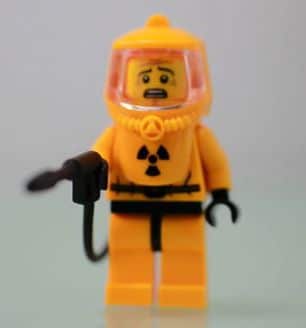On the heels of receiving over 40,000 citizen comments on their environmental impact assessment, it looks like the New York State Department of Environmental Conservation is also getting flack from the EPA on their fracking proposal.
The EPA‘s concerns echo those being shouted from the rooftops (or at least outside local town halls) for months from New York and Pennsylvania residents and advocacy groups, who are alarmed about the inherent risks to public health and drinking water that fracking imposes. The other looming question is whether the DEC can handle such a lofty task, seeing that they’ve experienced budget cuts and layoffs over the past couple of years.
Mainly, there are major concerns over drinking water buffer zones, wastewater treatment plans, those pesky earthquakes that seem to hang out near fracking-related sites, and the radiation hazards that could threaten workers and nearby residents.
The EPA boasts that their regulations prohibit gas drilling wells within 1 mile of public water supply areas while the DEC is only proposing 150 feet. That’s less than one New York City block (the smaller ones), half the length of a football field, or roughly the distance between you and the next-door neighbor whose bathroom horrifyingly has no blinds (although to be honest, there’s no adequate buffer zone for that).
Furthermore, apparently the impact assessment includes a clause that allows trucks to spread salts from “produced water” (the water that comes back up after fracking), over roadways during inclement weather during the winter months. EPA urges them not to do that, and in fact states:
“It is unclear why this distinction was made by the NYSDEC as produced water will have higher concentration of natural contaminants…”.
That’s nice that the DEC is attempting to embrace the whole “reduce, reuse, recycle” mantra, but it’s kind of missing the point if you sprinkle the roads with salt extracted from water that has previously contained over 600 toxic chemicals.
And on the radiation? The EPA is concerned that the data they are using in the impact assessment is outdated, since radioactive materials in Pennsylavania have been found to have higher radiation counts than expected, and that the DEC hasn’t taken into consideration all the potential points along the way where radiation could concentrate and contaminate local land and water resources.
Even so, the document also advises that homeowners preemptively test their water supply (through water quality testing facilities of their choosing) to “remove any concerns about the water testing results being biased.”
This “vote of no confidence” should really spark people to question whether this process can be adequately regulated, even with all the pitfalls and obstacles to continually overcome and oversee. People that continue to say wind and solar are too expensive clearly do not calculate all the external costs associated with fossil fuel extraction. This is why algebra is important- because when the equation doesn’t add up, the x and y you are solving for is often the cost to people’s health and livelihoods, as well as the long-term or irreversible damage to the surrounding ecosystems and the global climate.
Read the EPA‘s statement here.
Subscribe to our newsletter
Stay up to date with DeSmog news and alerts






